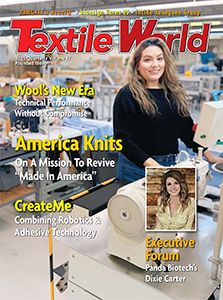KENNEBUNK, Maine — March 7, 2018 — In a significant advancement of its commitment to creating a sustainable future, Ramblers Way announced today the availability of the first-ever Cradle to Cradle Certified™ organic wool clothing line in the world. Ramblers Way offers 16 unique styles that are certified at the Silver level — 10 for women and six for men — using the company’s ultra-lightweight organic wool jersey in six low impact colors and silk thread. More information about the Cradle to Cradle (C2C) Certified Products Program levels achieved can be found in Ramblers Way’s product scorecard.
“We’re extremely proud to receive C2C certification for our organic wool clothing as it serves as further proof that high-quality clothing can be made in harmony with nature,” said Tom Chappell, founder and CEO, Ramblers Way. “At the same time, this certification offers ongoing opportunity for Ramblers Way to continue improving and innovating, so we can create clothing that meets the lifestyle needs of conscious consumers.”
Ramblers Way collaborated with MBDC, the world’s foremost advisors in material health, product design and the Cradle to Cradle® Design Framework founded by William McDonough and Dr. Michael Braungart, to assess the clothing line against the Cradle to Cradle Certified™ Product Standard. The independent certification guides designers and manufacturers through a highly in-depth evaluation of each product component and each stage of the supply chain in five environmental and social areas: material health, material reutilization, renewable energy and carbon management, water stewardship and social fairness.
“Ramblers Way has set a new benchmark for clothing companies around the world,” said William McDonough, co-founder of MBDC, the originators of the Cradle to Cradle Certified™ Program. “As the first company to launch a full line of Cradle to Cradle Certified™ organic wool garments, Tom Chappell and his team have once again demonstrated that size has little to do with might. I think Ramblers Way is an exciting company that surprises and delights by turning its values into value for their customers and all future generations.”
The certification applies to all Ramblers Way clothing that is also certified to the Global Organic Textile Standard (GOTS), which is a similarly rigorous, and complementary, system. GOTS uses independent bodies to verify compliance with internationally recognized organic textile standards at each step of the supply chain, from the moment wool is purchased to when it becomes a garment at one of Ramblers Way’s production facilities.
Launched with a commitment to protecting the planet and supporting local economies, Ramblers Way was born in 2009 when Tom Chappell began a journey to create a next-to-skin shirt that would keep him warm, soak up sweat, and wick away moisture. Tom identified Rambouillet and Merino sheep, two breeds with superfine and long staple fibers that, when spun together using a superior spinning process known as worsted, produce Ramblers Way’s proprietary yarn.
Ramblers Way wool is treated with natural enzymes to make it machine washable, and has never been subjected to the harsh chlorinated, industry standard process known as “Superwash.” As a result, Ramblers Way’s 4 ounce (less than 140 grams per square meter) fabric boasts superior softness and is the most lightweight jersey knit wool on the market. Ramblers Way 100-percent organic wool clothing certified to the GOTS and C2C standards is also made without harsh chemicals using some of the cleanest, low impact commercial dyes available. Therefore, while a typical synthetic t-shirt may take up to 60 years to decompose in nature, a wool t-shirt can decompose in less than six months.
“Our goal has always been to produce high-quality clothing that stays in your wardrobe for years to come. We are also constantly rethinking how to embrace designs that aren’t simply ‘less bad’ but also ‘more good,”’ said Nick Armentrout, Supply Chain director at Ramblers Way. “C2C and GOTS reinforce our commitments to sustainable agricultural, fair social practices, clean water standards, and end of life product requirements — a true circular path from the earth to the earth.”
Shoppers at the Portland, Maine store can meet a team of stitchers that produces Ramblers Way clothes in-store every day, as well as offers custom tailored garments to local customers. Ramblers Way also has stores in Portsmouth and Hanover, New Hampshire, and online at www.ramblersway.com.
Posted March 7, 2018
Source: Ramblers Way




